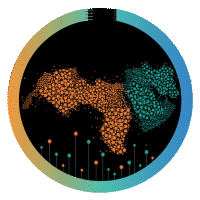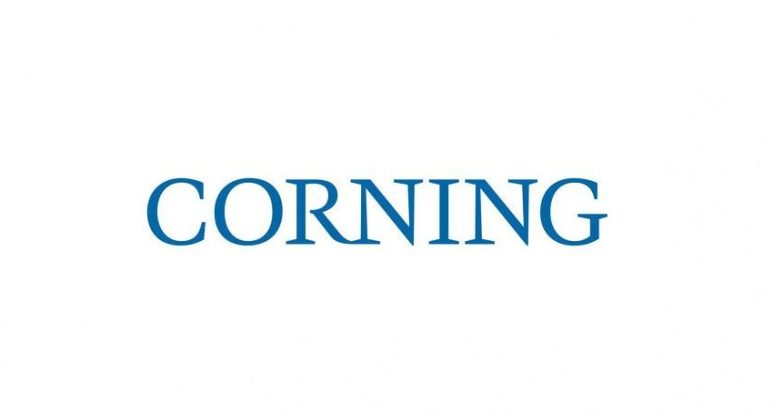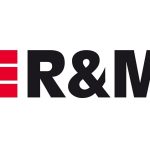It’s arriving at an opportune time and will be the underlying fuel to propel technologies like artificial intelligence (AI), the internet of things (IoT), and edge computing, all of which will help drive transformational change for individuals, communities, and industries.
It’s still early, yet initial indications are strong. Billions of dollars are currently being invested for spectrum and infrastructure, with carriers planning for widespread 5G coverage. The coming months and years will reveal a plethora of 5G-enabled applications and use cases, many of which haven’t even been thought of yet. For the communications industry, understanding this historic shift and its implications couldn’t be more important.


Evolution of 5G
Putting the evolution of 5G in perspective is critical. We’re early in the game for what is essentially laying the foundation for how we will use networks in the future. What we’re witnessing now is a significant enhancement of the mobile experience. But that’s only the beginning,
what will follow is the true enablement of the IoT — billions of connections to the network impacting every facet of our daily lives- as well as the delivery of a mobile network that for the first time will be so fast in its response that will enable Ultra Reliable Low Latency communications (URLLc). These two pillars together, combined with the natural increased in data rates that 5G will deliver for starters, will transform the healthcare, manufacturing, automotive, and transportation industries — virtually every aspect of how we live, work, and play.
The first stage of this evolution, enhancing the mobile experience with increased bandwidth, is already well underway, and the results are encouraging. If 4G brought the equivalent broadband experience of DSL or DOCSIS to the smartphone, 5G will bring a near-fiber experience. Gigabit speed throughput to the handset is in sight.
In fact, Etisalat recently reported it achieved 3,1 Gbps download speeds throughput on its live 5G network, using the 3,5 GHz frequency band.1 Speeds like this are for demonstration purposes for now, and won’t represent what the average 5G user will experience at scale, but they do highlight the increasing capabilities of 5G technology. Cisco predicts average 5G speeds will reach 575 Mbps by 2023, 13x more than the current average mobile connection.

Different operators have acquired licenses on various frequency bands, primarily on Sub 6GHz and near and above 30GHz called Millimeter band, and it’s important to note the spectrum they operate on directly correlates to the signal reach. In recent tests performed by industry research firm OpenSignal, Verizon achieved average 5G speeds of 723 Mbps.3 The increased amount of available spectrum in the Millimeter band and the natural speed of these higher frequencies (in their case in the 24 MHz and 28 MHz bands) have allowed them to reach these very high data rates, at the expense of deploying more mobile sites in the form of small cells. This is because higher frequencies are more delicate that their counterpart in the Sub 6GHz band, reducing the maximum reach that can be achieved from a mobile site. In the Middle East, the focus is, as to these days, on Sub 6GHz frequencies where there is plenty of spectrum available for local carriers to deliver a fully immersive 5G experience.
Regardless of initial spectrum choice, Gulf mobile operators are introducing a quite dramatic improvement in mobile network performance. This will enable a new and better experience for smartphones, putting just about any application, regardless of bandwidth requirements, in the palm of anyone’s hands. Augmented reality, where subscribers can use their 5G connections to enable unique applications like immersive experiences at live events, is one example of enhanced smartphone capabilities enabled by improved mobile network performance. In July 2019, Telecom Egypt in partnership with Ericsson trialed AR, VR and MR on a 5G network, providing a new immersive experience for football fans.

The Next Phase
While the initial phase of 5G, with its emphasis on the mobile experience enabled by higher data rates, is encouraging, the next phase will truly bring the promise of IoT and URLLc to life. If we look at IoT alone, it will facilitate connectivity to vast amounts of devices and sensors. GSMA predicts that by 2025 in MENA alone, there will be 1.1 billion sensors and networks.
By leveraging 5G, network operators will be able to capitalize on these new expanding IoT opportunities, particularly within certain vertical industries when combined with URLLc. The business-to-business
(B2B) opportunities enabled by 5G represent a dramatic growth opportunity and will be a worldwide $700 billion market by 2030 for network operators, according to Ericsson.5 Key industries for this opportunity include healthcare, manufacturing, and energy.
Applications that 5G will enable include automated factories, smart buildings, drones and autonomous connected vehicles, public surveillance and security, and precision agriculture.
Some applications that look particularly promising to Ericsson include real-time automation, forecasted to generate $107 billion by 2030, and connected vehicles, estimated at $89 billion by 2030.
Connected vehicles where low latency is critical are of particular interest for 5G applications. A recent cellular vehicle-to- everything (C-V2X) test by Sprint in Chicago resulted in a 40% faster transmission time for alerts using 5G in comparison to 4G LTE. Variance was 72% lower response time on 5G than on the LTE network.6 These results are encouraging for public safety applications.
As the Ericsson data notes, automation and robotics hold great promise as well. For instance, in the US, AT&T has partnered with Badger Technologies to demonstrate this promise. Using 5G, AI, and edge computing, AT&T is providing 5G connectivity for robots in a retail store environment. Robots within stores can be used for a variety of purposes, including identifying out-of-stock, mispriced or misplaced inventory, as well as store hazards. AT&T 5G service is providing these in-store robots with lower latency and higher throughput to process and share vast amounts of data. Otherwise, their data requirements could tax and hamper existing in-store
Wi-Fi networks, resulting in poor in-store Wi-Fi customer experience.7
While 5G connectivity and the services revenue it generates will be attractive, the opportunity will not stop there. Professional services and managed networks will be lucrative for network operators as well. Indeed, the future is bright for network operators, as they expand their 5G business plans beyond enhancing mobile experiences into the B2B marketplace.
As network operators, wireline and wireless alike, contemplate how to best maximize this 5G evolution opportunity, one common attribute is clear. Leveraging the advantages of deep fiber networks is paramount.

Advantage of One Converged Network for 5G
Fiber networks have evolved, and significantly so, much to the advantage of network operators. Legacy fiber network architectures were built to handle single network functions. One network for residential broadband access. Perhaps another network to serve enterprise customers. And another network dedicated to cell-site backhaul. All requiring separate network management functions, and maybe even separate workforces. This way of building in silos became an inefficient network of networks, especially when operators started to merge and acquire their counterparts to be able to deliver all mobile and fixed services together.
Times have now changed. There are less players in the telecommunication industry all capable of delivering QuadPlay services, with voice, data and TV on both fixed and mobile devices. Network operators now have the luxury of leveraging a single converged network to deliver all these functions. And just in time for 5G. If ever there were validation of the notion that wireless needs wires, it’s with 5G. The preferred high-bandwidth, low-latency performance of 5G can only be enabled by a fiber backbone. Network operators now gain tremendous flexibility and competitive advantage by deploying fiber networks directly to antennas.
Luckily, that single converged deep fiber network can serve any market segment and meet any customer demand.
The advantage of a single converged network is now within reach. Utilizing next-generation passive optical network (PON) and dense wavelength division multiplexing (DWDM) technologies mean that any application, from residential fiber to the home (FTTH) to 5G mobile sites (macro or small) and connected via backhaul or fronthaul links, is achievable.
In a 5G world, this advantage cannot be understated. As network operators deploy fiber for residential and business services, they can easily add 5G small and macro cell fiber connectivity when and where it’s needed.
The foundation for both wireline and wireless networks can be built from a single network. Cost models developed by Corning show that building one network that enables any wireline and wireless application only increases material costs for that network build by approximately 6%.
Network planning is key, though. A converged fiber network that can simultaneously support wireline and mobile applications requires sound network planning. 5G networks in some cases might require significant antenna densification and perhaps demanding fiber connectivity in places or not easy access. Network operators should ensure they not only have adequate fiber cable counts to support multiple applications and multiple carriers, but also easy network access points for connectivity.
Corning studies not only theoretical limits of wireless technologies but the practical application of transport and access deployments in support of wireless densification.
An innovation we’re excited about introducing in 2020 is the Evolv™ Hardened Connectivity Solution enabled by Pushlok™ Technology — a smaller-form-factor portfolio of hardened connectivity solutions. By reducing terminal sizes to ¼ of existing solutions, operators can place terminals on street furniture or in tight spaces where traditional solutions may not have been feasible.
When densification of the network is required for 5G it could mean 16x the network nodes of 4G, or more. In other cases the challenge will be to deliver fiber connectivity to existing macro and small sites that had operating on wireless links to backhaul the information. In both cases, network operators have a no easy tasks and should plan accordingly. Identifying partners with the right solutions and the right experience is key. In a 5G world, maximizing your opportunity requires thoughtful network planning and strategic partnerships.

For further information, please visit:
https://www.corning.com/fiber-to-the-premise/emea/en/home.html














Leave a comment